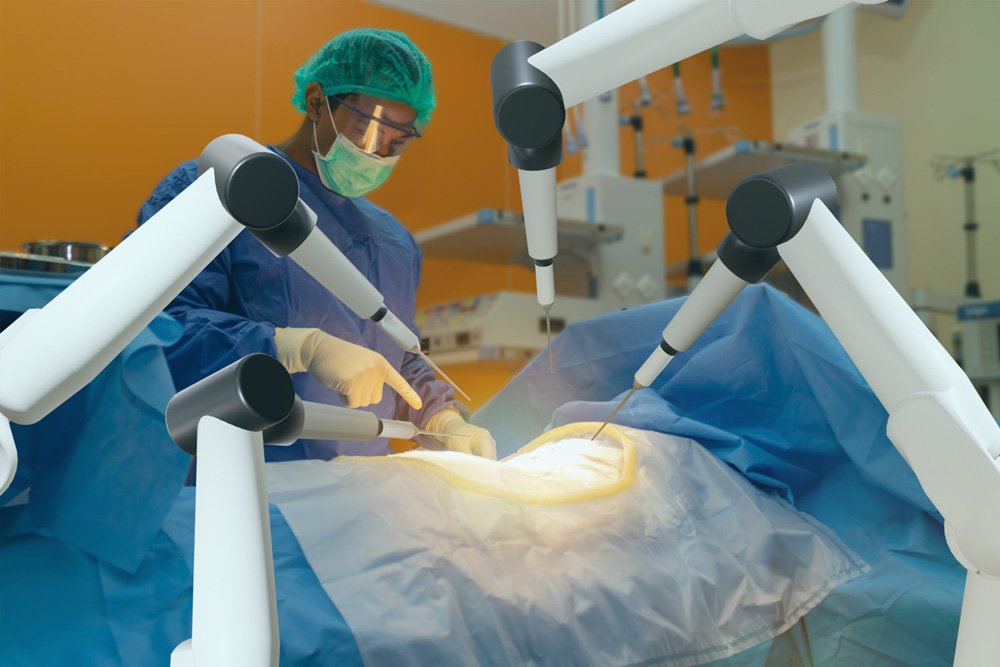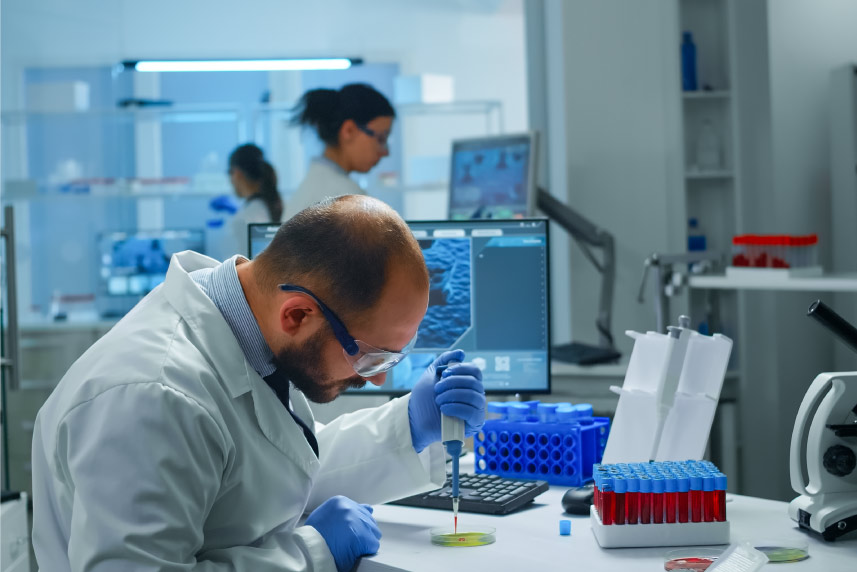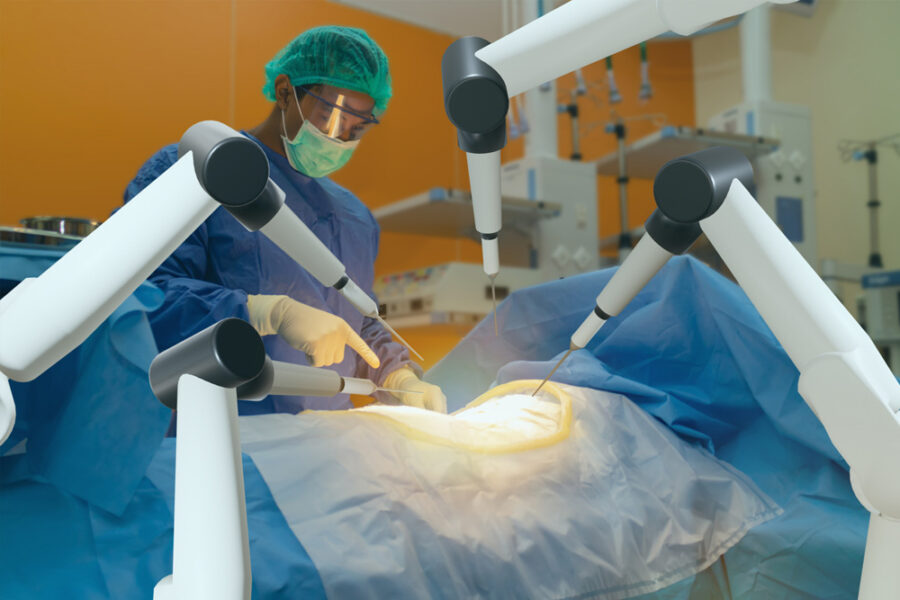 Prostate cancer
Prostate cancer is one of the most common cancers in men worldwide. In India,
approximately 40,000 fresh cases were reported in 2020. The International
Agency for Research on Cancer projects almost 71,000 new cases by 2040.
Thankfully, there have been significant advancements in treatment options in
recent years.
There are various treatment options, from traditional open surgical procedures
to robotic-assisted surgery. Both processes involve the removal of the prostate
gland and surrounding tissue.
While the traditional process involves a large incision in the abdomen, the
robotic prostate cancer surgery involves small incisions, making it less invasive
and resulting in a faster recovery, can quickly resume back to all your acivities
and good quality of life.
Robotic prostate cancer surgery is more accurate, healing is faster, and it is
more effective. Keep reading to discover why this method is gaining popularity
among patients and doctors.
Robotic Prostatectomy
Robotic prostate cancer surgery is a minimally invasive surgical technique for
the removal of the prostate gland, assisted by robotic systems. With the help of
robotics, doctor performing the surgery can visualize the internal structures
like veins, arteries, and nerves better during the procedure. This reduces the
risks of errors, and the outcomes are much better. The procedure requires a
few keyhole incisions, takes less time, and is minimally risky for the patient.
Advantages of Robotic Prostate Cancer Surgery
1. Small Incisions
In this surgical procedure, minute keyhole incisions are made near the prostate
area. The robotic instruments are inserted through these incisions.
2. Lesser Risks to Surrounding Tissues
The prostate gland is a part of a complex system within the body, located in the
pelvic region. The venous complex, rectum, nerves, and sphincter muscles
surround it. All these tissues coordinate and work together to support sexual
functions and control urination. In traditional procedures, it is easy to cause
harm to blood vessels, nerves, and muscles located near the gland. Any damage
to these structures can be permanent, causing problems like erectile
dysfunction, urinary incontinence, etc.
With robotic surgery, these issues are minimised considerably due to magnified
vision, better dexterity which improves precision.
3. Less Pain & Blood Loss
Compared to traditional surgery, robotic surgery causes less pain since it is
minimally invasive and the incisions are smaller. Postoperative pain is less too,
and patients are administered a few painkillers post-surgery. Due to keyhole
incisions, there is minimal loss of blood. In most cases, there is no need for a
blood transfusion while the procedure is carried out or after.
4. Faster Recovery
Robotic-assisted prostate cancer surgery is more precise than traditional
surgeries. The recovery time is faster, with most patients being discharged
within 1 to 2 days post-surgery.
Am I a Good Candidate For Robotic Prostatectomy?
Robotic-assisted prostate cancer surgery comes with certain restrictions. It is
not an option for all patients. The doctor will assess your age and general
medical conditions to decide if this is the best option or otherwise.
How Can I Benefit After Surgery?
You can return to your regular activity within one to two weeks of robotic
surgery. In traditional methods, it takes about four to six weeks. Most patients
return home the next day. You regain about 30% of bladder function within a
week and full control of your bladder within couple of weeks. The catheter is
removed in 10 to 6 days after the surgery, and in most patients, there is no need
for pain medication.
 Prostate cancer is one of the most common cancers in men worldwide. In India,
approximately 40,000 fresh cases were reported in 2020. The International
Agency for Research on Cancer projects almost 71,000 new cases by 2040.
Thankfully, there have been significant advancements in treatment options in
recent years.
There are various treatment options, from traditional open surgical procedures
to robotic-assisted surgery. Both processes involve the removal of the prostate
gland and surrounding tissue.
While the traditional process involves a large incision in the abdomen, the
robotic prostate cancer surgery involves small incisions, making it less invasive
and resulting in a faster recovery, can quickly resume back to all your acivities
and good quality of life.
Robotic prostate cancer surgery is more accurate, healing is faster, and it is
more effective. Keep reading to discover why this method is gaining popularity
among patients and doctors.
Prostate cancer is one of the most common cancers in men worldwide. In India,
approximately 40,000 fresh cases were reported in 2020. The International
Agency for Research on Cancer projects almost 71,000 new cases by 2040.
Thankfully, there have been significant advancements in treatment options in
recent years.
There are various treatment options, from traditional open surgical procedures
to robotic-assisted surgery. Both processes involve the removal of the prostate
gland and surrounding tissue.
While the traditional process involves a large incision in the abdomen, the
robotic prostate cancer surgery involves small incisions, making it less invasive
and resulting in a faster recovery, can quickly resume back to all your acivities
and good quality of life.
Robotic prostate cancer surgery is more accurate, healing is faster, and it is
more effective. Keep reading to discover why this method is gaining popularity
among patients and doctors.
 Prostate cancer is one of the most common cancers in men worldwide. In India,
approximately 40,000 fresh cases were reported in 2020. The International
Agency for Research on Cancer projects almost 71,000 new cases by 2040.
Thankfully, there have been significant advancements in treatment options in
recent years.
There are various treatment options, from traditional open surgical procedures
to robotic-assisted surgery. Both processes involve the removal of the prostate
gland and surrounding tissue.
While the traditional process involves a large incision in the abdomen, the
robotic prostate cancer surgery involves small incisions, making it less invasive
and resulting in a faster recovery, can quickly resume back to all your acivities
and good quality of life.
Robotic prostate cancer surgery is more accurate, healing is faster, and it is
more effective. Keep reading to discover why this method is gaining popularity
among patients and doctors.
Prostate cancer is one of the most common cancers in men worldwide. In India,
approximately 40,000 fresh cases were reported in 2020. The International
Agency for Research on Cancer projects almost 71,000 new cases by 2040.
Thankfully, there have been significant advancements in treatment options in
recent years.
There are various treatment options, from traditional open surgical procedures
to robotic-assisted surgery. Both processes involve the removal of the prostate
gland and surrounding tissue.
While the traditional process involves a large incision in the abdomen, the
robotic prostate cancer surgery involves small incisions, making it less invasive
and resulting in a faster recovery, can quickly resume back to all your acivities
and good quality of life.
Robotic prostate cancer surgery is more accurate, healing is faster, and it is
more effective. Keep reading to discover why this method is gaining popularity
among patients and doctors.



